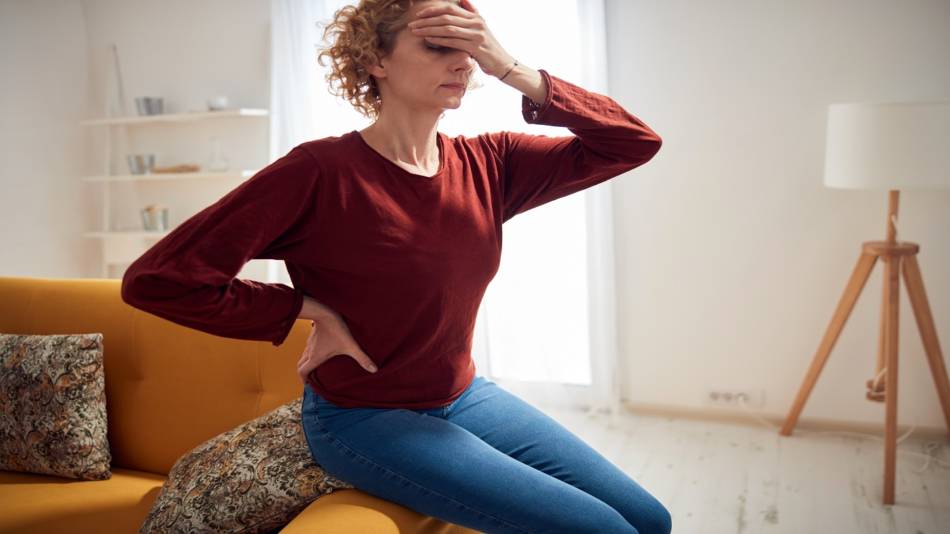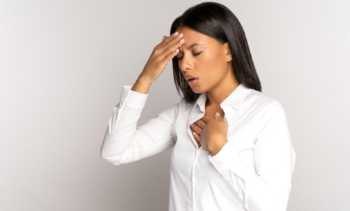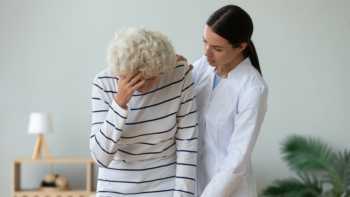Our Members Asked:
How to Reduce Lightheadedness and Dizziness When Standing Up (Orthostatic Hypotension)

Answer:
Orthostatic hypotension, also known as postural hypotension, is characterized by a drop in blood pressure when standing up. As there is reduced blood flow to the brain, lightheadedness (a feeling of faintness or dizziness) commonly occurs, as can other symptoms such as blurred vision, nausea, headache, and brain fog. Shortness of breath, shaking, and rapid heartbeat can also occur.
When this occurs within 15 seconds of standing, it is called "initial" orthostatic hypotension, and it often occurs in people considered otherwise healthy. Note that there are other forms of orthostatic hyportension, including "classic" (within 30 seconds to 3 minutes of standing) and "delayed" (after 3 minutes of standing) that can occur due to dysfunction of the nervous system.
Researchers have shown that symptoms of initial orthostatic hypotension can be significantly reduced with simple movements performed right before, or immediately after, standing. For details, sign in.
Be aware that vitamin D deficiency has been associated with a greater risk of orthostatic hypotension, although it is not clear that supplementing with vitamin D reduces symptoms. In addition, a preliminary report suggested that CoQ10 helped maintain blood pressure in older people with orthostatic hyportension.
Join today to unlock all member benefits including full access to all CL Answers and over 1,400 reviews.
Join NowAlready a member? Sign In Here.
Join now at www.consumerlab.com/join/











Barbara17145
September 22, 2023I have found that my tendency to feel dizzy when standing up happens when I am dehydrated (low blood volume leads to low blood pressure) and can usually be cured by drinking several glasses of water and having a little salt.
Reply to this post…
Gary17144
October 28, 2022One trick I recommend to patients is something I heard that the King's Guards of Buckingham Palace do to prevent passing out in the stifling heat while standing at attention for prolonged periods. In this situation, the heat causes veins to dilate in the lower extremity veins causing a more significant amount of blood to gravitate and pool in the lower legs. This, along with profuse sweating, diminishes circulatory volume resulting in a compromise of blood pressure and perfusion to the brain, eventually causing them to pass out. To prevent this, they will repeatedly clench the toes in their feet and perform toe raises to push the blood pooled in the lower legs back into the circulation, increasing blood perfusion to the brain and reducing the risk of passing out.
Reply to this post…
Sylvia17142
March 08, 2022If I do this simple movement before standing, I have no dizziness. While seated, move your feet sideways past one another a couple of times. (The right foot moves sideways to the left and then back, and the left foot moves sideways to the right and then back, both feet moving at the same time. Your feet will pass each other during this movement, and I alternate which foot is on top.
Reply to this post…
Mark17140
February 23, 2022I have read that doing a few squats upon rising helps. I have found this to be true. 2 squats and I’m fine
Reply to this post…
Miles17139
February 21, 2022In yoga, we learn to inhale when moving to standing. Try inhaling while moving to standing and see if it works for you--that is the most important thing. It works for me.
Reply to this post…
Mary Agnes17137
February 20, 2022My doctor told me to push with my heels as I'm getting out of bed - has worked like a charm for about 5 years now.
Jennifer17138
February 23, 2022Could you please explain better? I'm happy for you and I'd love to try it, but I don't understand from your description. Also, do you have dizzies when going from squatting or bending over to standing? If so, what works?
Reply to this post…
J
February 19, 2022This is similar to the techniques used by jet pilots* encountering high G forces, to prevent passing out.
*military, acrobatic and racing pilots for example.
Reply to this post…
Bill17132
February 18, 2022Drinking more water and taking a vitamin d supplement have reduced my orthostatic hypotension.
Reply to this post…